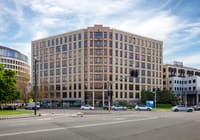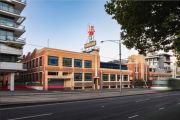
Clock stuck on commercial real estate prices
One saying sums up commercial property for many of the experts: “The hands on the property clock are at 10 minutes to midnight, but the clock is stuck.”
Not everyone agrees. But for many, the clock analogy sums up the current ambivalence.
Prices have risen strongly in the past year. Billions were added to the real estate investment trust values in the six months to December. Yields in many sectors are less than those of 2007. Finance for retail and commercial property is higher than 2007 levels.
So yes, it looks toppy.
Yet the money keeps coming. CBRE’s Global Investor Intentions Survey estimated more than $US1 trillion ($1.31 trillion) worth of capital targeting commercial property investment in 2016.
Quantitative easing is flooding the world with money. Property – well the right property – offers yields much higher than those on bonds and, seemingly, a much better security of return than equities.
The key figure, the gap between property yields and bond rates, is as wide as it has ever been.
Standout performance
Property had a great 2015. On the Property Council-IPD numbers from MSCI, the Australian real estate investment trusts returned more than 12 per cent for the year, the unlisted core property funds delivered 13.5 per cent, and, in a standout performance, the Unlisted Core Retail Property Funds enjoyed a more than 27 per cent return.
No one should expect those sorts of numbers in 2016.
But even a stock like Scentre Group, which had a huge sharemarket run in 2015, offers a yield of almost 5 per cent for 2016. For Australia’s best shopping centre portfolio, and gearing of almost 35 per cent, that still looks OK.
Year to date, the benchmark Australian real estate investment trust index has risen 4.2 per cent. By comparison, the equities index is down 2.9 per cent.
In a world with rising concern about the global economy, and an expectation that interest rates will be lower for longer, the demand for real estate will probably stay strong.
Nevertheless, investors who have seen the cycles before are beginning to hedge their bets. Finance for commercial property is tightening, even despite the low headline numbers.
Sold non-core assets
Leading property players like Westfield Corporation and Scentre Group have sold non-core assets, even though the sales dilute earnings. GPT Group has told investors that its funds would not be big buyers in 2016. Goodman Group is cashing up to take advantage when the cycle turns.
Other investors, like Centuria Capital, can see opportunities in properties with vacancy and locations with new infrastructure benefits, but it is taking care with financing.
“The lesson of the GFC was that we want a healthy margin between the drawn loan to value ratio and the ratio at which we are in breach,” Centuria Group chief executive John McBain says.
The CBRE Investor Intentions Survey was not as bullish as the trillion dollar headline suggests. “Strategies are shifting amid concerns about the health of the global economy . . . 2016 looks likely to be a ‘risk-off’ year, with investors reporting they are more focused on core assets and less likely to seek secondary, value-add and alternative opportunities,” CBRE reports.
Colliers International’s managing director capital markets and investment services John Marasco acknowledges that “half the market is saying we are five minutes to midnight and the other half think there is further to go”.
“I have lived through three cycles,” Marasco says. “The last cycle was about debt, this is about equity. There are more investment and capital sources. And the demand from Asia is extraordinary.
“The people at the coal face can see it.”
rharley@afr.com.au











